Crestline Experimental Dive Unit
Presents the
FEOR Light

As inspired by Tom Rose. ( You know it was just a matter
of time. )
This project is for those Oxygen Rebreather Divers in the
Red Light District of town,
and for those of you who would like more information about
the
CEDU Deep Oxygen Course.
Project: FEOR-Light
A Manual Gas Addition
Closed Circuit Oxygen Rebreather
with a
Integrated PPO2 Sensor/Display
Module
Housed Within The Scrubber
Assembly
[ * Patent Pending ]
You can blame this project on Tom, as he showed us how to make a single
battery PPO2 display out of a LED panel meter. [Tom's
Dual Oxygen Sensor System]
Taking Tom's advice, I tried my hand at this. Some of my work can be
seen here at [Bob's Sensor
Burn-Out] page.
Tom, we at the CEDU Thank You.
* I have finally took the step with Tom
Rose to file a Patent with the U.S. Patent Office.
To quote the words of my friend Tom:
"Homebuilders have fun coping the design,
Manufactures are invited to open up their checkbook."
Now to Turn On the
FEOR-Light

As can be seen the center section of the FEOR is of modular design, thus
allowing your own counterlung assembly and breathing hose unit to be used.

The display is housed within the scrubber canister eliminating the need
for external hoses, which can snag on things and make you look like a refugee of
the old octopus dive gear generation. Internal streamlined equipment allows
faster swims into and back from your target while allowing you to have more
energy at your destination... to get that shot (picture) that you wanted.
PPO2 Sensor/Display Module (S/DM)

The PPO2 Sensor/Display Module is a complete stand alone subunit. It
houses the LED display, the oxygen sensor, the battery and additional
circuitry. The rebreather can be dived without the inclusion of the PPO2 S/DM,
thus allowing for more scrubber to be carried.
In addition, the PPO2 S/DM is a complete "Oxygen Analyzer" and can be
used as any other oxygen analyzer. (Think about this one.)

This image of the face of the PPO2 S/DM shows the gas flow passage with
the oxygen sensor sampling probe in place. Within the scrubber assembly this
end faces the gas leaving the carbon dioxide absorbent bed.

Side view of electronic module shows profile of oxygen sensor and o-ring
seal around face of the PPO2 S/DM.
The PPO2 S/DM operates at ambient loop pressure.
Some additional images of the oxygen addition system.
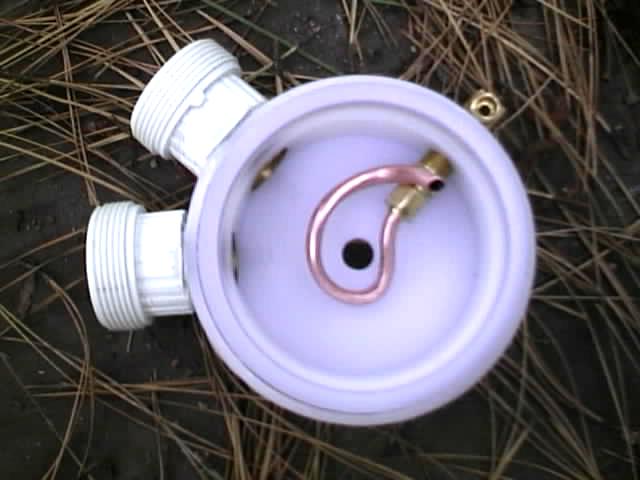
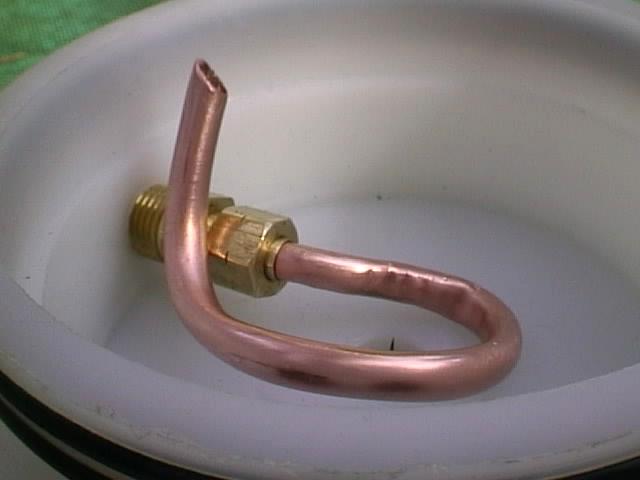
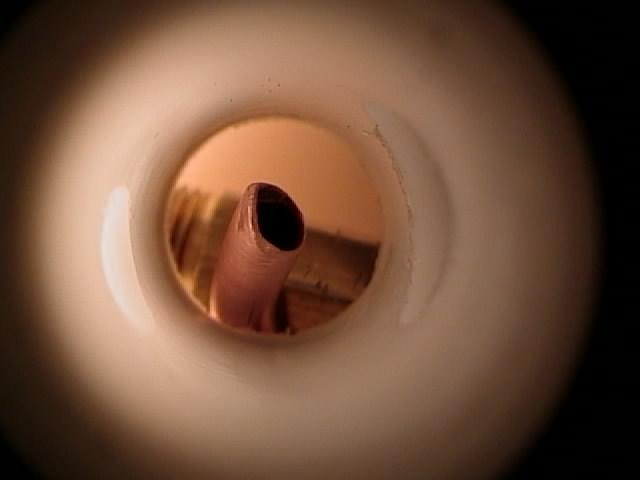
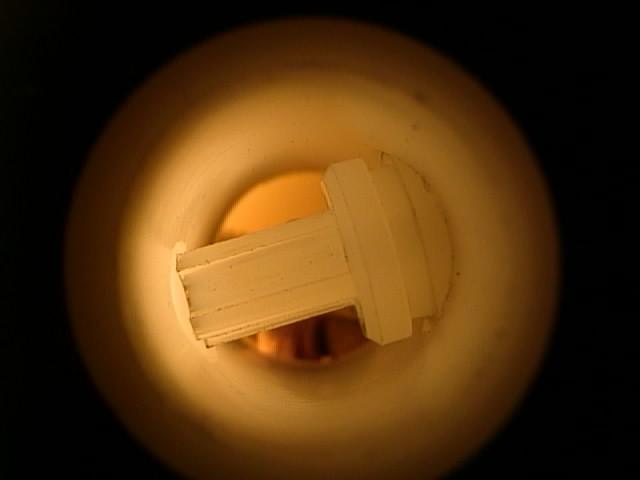
UL Left End Cap with integrated Cyclonic Flow Generator (CFG).
UR Close up of CFG. Note double O-ring seals on End Cap. (Customer
requested after first prototype.)
LL Close up of the business end of the CFG
within the inspiratory gas flow path of the PPO2 Sensor/Display
Module.
LR Close up of the oxygen sensor's probe within the gas flow path of the
PPO2 S/DM.

Ready to assemble: Carbon Dioxide Scrubber assembly charged with 1.5 kg
of CO2 absorbent.

Fully assembled unit, ready to dive.
Unit mated with 248 liter Oxygen tank at 2015 psi.
Note, operationally the last digit of the LED display was "blackened out".
(The swimming diver has no need for that decimal place.)
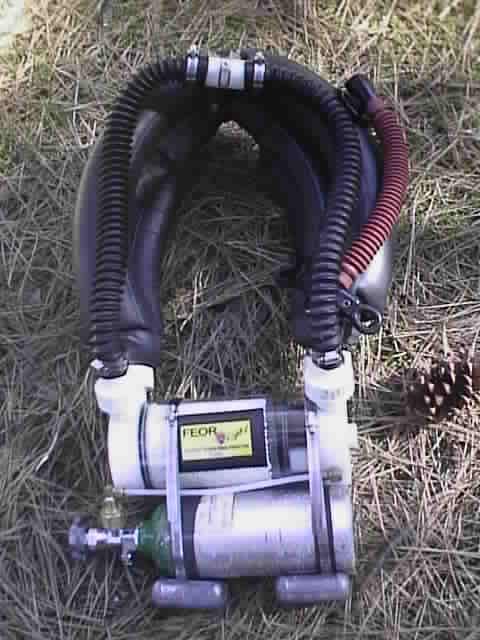
You will note from this picture, that the current unit has an oral
inflation flotation bladder incorporated into the counterlung assembly. (Yes, I
must admit another Harley tube gave it's life for my rebreather. My wife Jane
requested the additional floatation ability while on the surface, and it sure
does help on the surface. Those who dive with a BC know what I mean.)
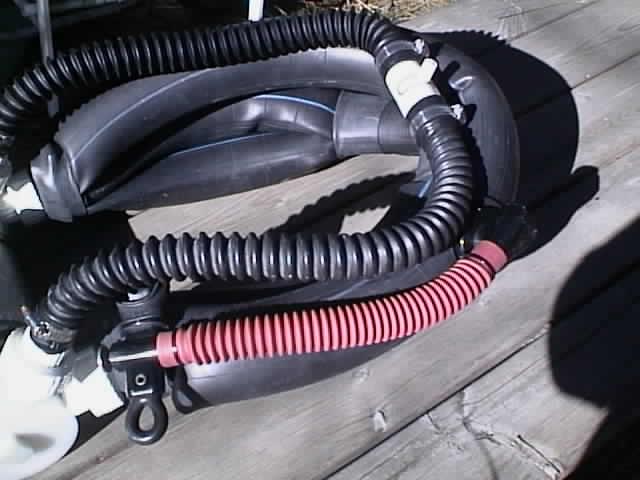
Close up of the oral inflator for surface flotation. (Patrick, the Red
Sexy Hose is back.)
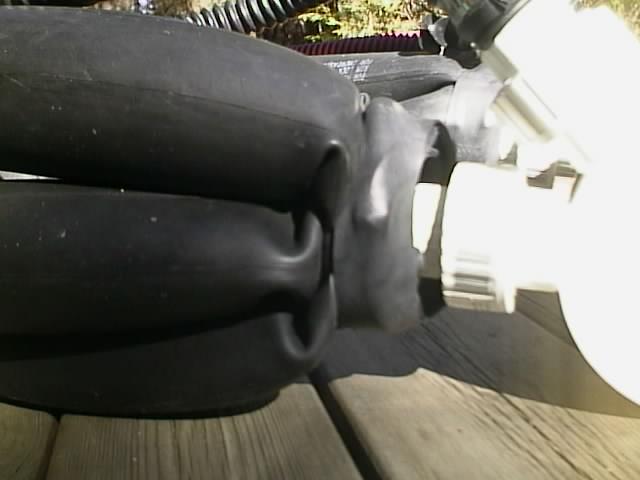
Yes, there are three motorcycle tubes connected.
In Neptune's lair enjoying the flora and
fauna.
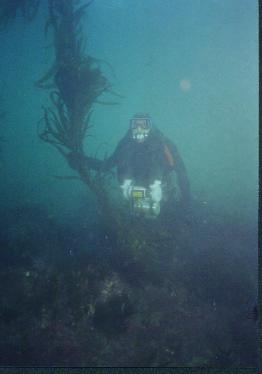
Hanging around Macrocystis pyrifera watching it grow.
(With an optimum growth rate of up to 2 feet a day, ... don't blink or you
will miss it.)
I was also being entertained by watching the PPO2 display work as advertised.
(I am easily entertained.)
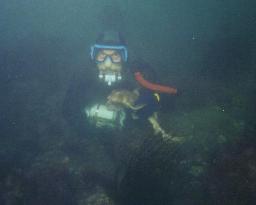
"Professionally Silent" FEOR-Light diver visited by Heterodontus francisci.
(I think that they detect the electromagnetic signature being generated by
the unshielded circuitry.)
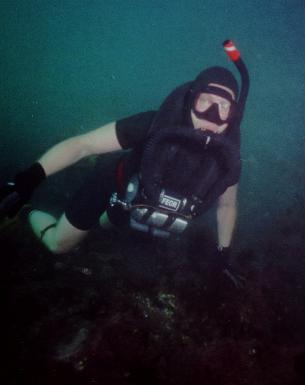
Dive Buddy Erick sporting a FEOR-ExCap in basic black.
(Not electrified, but still considered the gold standard of FEOR's.)
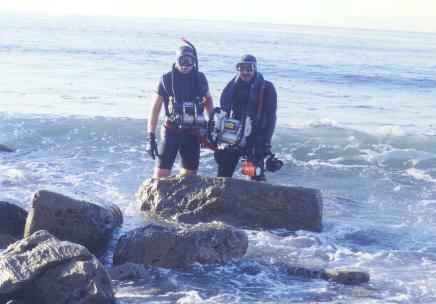
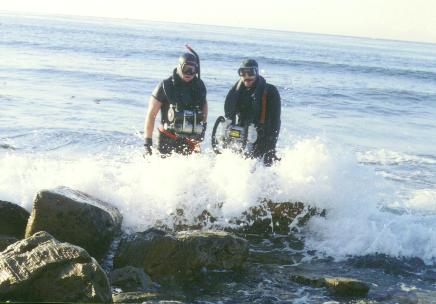
(Time to rock and roll.)
Another great day in the pond was had by
all.
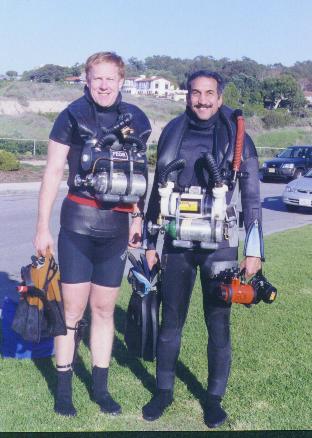
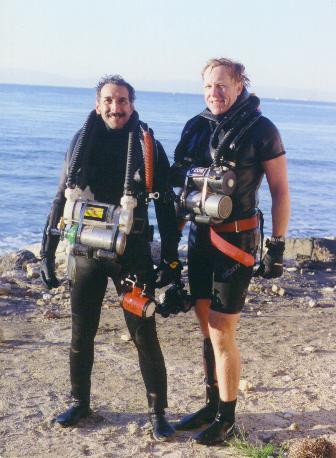
(Pre and Post Dive. Standing tall with FEOR.)
This dive was at Malaga Cove,
California. A rocky entry in mild 1 to 2 foot surf. After crossing the surf
zone, and just prior to our descent, I noticed that the optical viewfinder for
my 15mm Nikonos lens was missing. Bummer. That viewfinder had been replaced
one time already a number of years ago after it bounced off the deck of a dive
boat. After today's dive, a search was conducted where I felt it must have
dislodged, in the one to three foot depth range. It took 45 minutes of being
thrashed about in the surf zone until, low and behold, I found the viewfinder
(in addition to golf balls, spark plugs, lobster, etc). This was a very good
dive indeed.
Pre and Post Dive Info:
Unit is to be prepared just prior to dive.
1. Check Oxygen supply
2. Pack Scrubber
3. Place new battery ( test for proper voltage first)
4. Turn on and calibrate display with ambient air
- Adjust display to read about .21 +/- <whatever> (Your decision,
you are the adult.)
5. Place display within Clear Scrubber Assembly
6. Complete assembly of entire rebreather
- Connect Oxygen tank, Counterlung, Breathing Hose and Waiststrap
subunits.
7. Purge system as desired
8. Dive system as you want (good idea not to go deeper than 20fsw)
You are big people. Just remember there are those more talented
than you and I, who have perished using equipment which could be considered
much better engineered and manufactured than this. Please know what you are
doing, always have a back up action and gas supply available, never put yourself
in a situation where your life really is dependent on your machines ability to
deliver your next breath. Always have an emergency back up course of action
available, and know how to implement it successfully.
Post dive:
1. Disassemble unit for cleaning
2. Remove and discard used scrubber chemicals and battery (In a politically
correct recycling system of course.)
3. Clean and dry unit
Welcome to the ranks of being a FEOR-Light diver. (With some more rank
than others.)
The Few, the Proud, the Enlightened. The FEOR-Light diver.
And when someone offers you a light,
Insist on a FEOR-Light.
The most enlightened oxygen rebreather the CEDU makes public.
Smile,
Robert Iannello, Director
Crestline Experimental Dive Unit






















